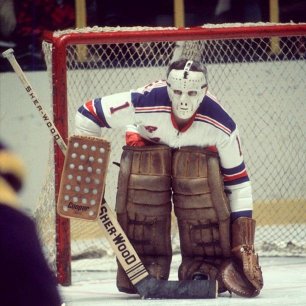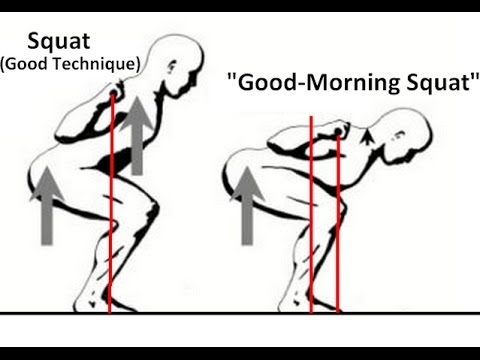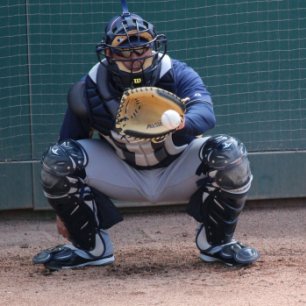The Goalie

Yes, I know, this is an old school picture and that no serious hockey goalie is going to stand like this any more. Today’s goalies tend to utilize what is called “The Butterfly.” The idea behind this stance is to protect the 5-hole by pressing the knees together and protecting the bottom corners by spreading the ankles apart as far as possible. If you can squat with your knees pressed together, you’re my hero.
If you look at the goalie picture above you’ll notice that, his feet are pointing forwards so that his toes are facing the same direction that he is looking. For the most part his feet are shoulder width apart, his knees are closer together and his back is parallel to the ground as opposed to his thighs.
When squatting in this position, unless he has really good hip mobility, it’s going to be harder for him to get this thighs parallel, and like a lot of lifters, he’s going to lean forwards to make it look like he’s deeper then he really is.
When squatting this way, with weight on your shoulders, you’re locking yourself into what I call a good-morning squat. This is where the barbell is no longer over your mid-foot, you’ve lost your center of gravity, and as a result, you become top heavy. When this happens, most lifters compensate by lifting with their backs instead of their legs.

THE CATCHER

If you look at the catcher picture above you’ll notice that, his feet are pointing outwards at roughly a 10-30 degree angle. Pointing the toes out allows some athletes to squat deeper by providing a slightly wider base of support. When toes are pointed out, the adductor muscles on the inside of our legs are also lengthened and become engaged. More help from the adductors means a stronger and more efficient way to move the barbell. [squatuniversity.com]
Going back to our catcher, you’ll notice that, for the most part, his knees are a little wider then shoulder width apart when he’s in the hole. Keeping the knees wider helps lifters to activate their lateral glute muscles (glute medius). [squatuniversity.com]
With the feet pointing outwards at roughly a 10-30 degree angle, the adductor muscles lengthened/engaged, and the pelvis stabilized by lateral glute muscles, our catcher is able to squat down into the hole with his legs parallel to the ground and still maintain a center of gravity that is directly over his feet.
When squatting in this position, he doesn’t need as good hip mobility as our goalie, it’s going to much easier for him to get this thighs parallel, and he’s not going to lean as far forward because his center of gravity isn’t changing.
When squatting this way, with weight on your shoulders, you’re locking yourself into a more neutral position that resembles sitting down. The barbell is remains over your mid-foot, your center of gravity doesn’t change and you’re no longer top heavy. When this happens, you’re lifting with your legs as opposed to your back making for a much safer lifting experience.
